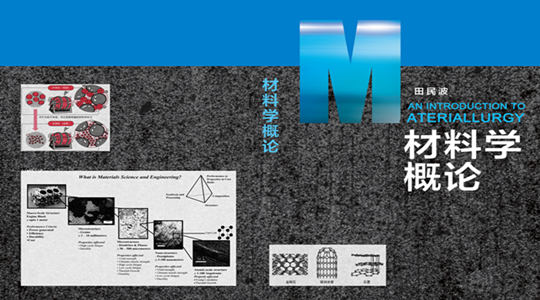
当前课程知识点:History of Western Civilization 全英文西方文明史 > Chapter 7 West in the Seventeenth Century > 7.1 The Thirty Years War > 7.1.1 Text
返回《History of Western Civilization 全英文西方文明史》慕课在线视频课程列表
7.1. The Thirty Years War 1618-1648
1. The Thirty Years' War was one of the longest and most destructive wars in human history. It was fought in Central Europe between 1618 and 1648. It was the deadliest of the European religious wars. Initially it was a war between various Protestant and Catholic states in the fragmented Holy Roman Empire, and then gradually developed into a more general international conflict involving most of the European great powers. The war ended by the Peace of Westphalia which recognized the coexistence of the two religions in Europe, Protestant in the north and Catholic in the south.
2. The Great Miseries of War are a series of 18 etchings蚀刻版画 by French artist Jacques Callot. They were published in 1632 during the Thirty Years' War. And this is the most famous one titled The Hanging. It was so horrible. The Thirty Years' War is the deadliest religious war in the history of Europe, it killed 8 million people.
3. The Peace of Augsburg was a treaty signed in 1555 at the imperial city of Augsburg by Holy Roman Emperor Charles V and the Schmalkaldic League, a military alliance of Lutheran princes within the Holy Roman Empire. It officially granted states within the Empire the right to choose either Lutheranism or Roman Catholicism as the official religion of their state.
Ferdinand II was elected King of Bohemia in 1617
Charles V was from the House of Habsburg, he was King of Spain from 1516 and the Holy Roman Empire from 1519, and he died in 1558. His son Philip II was the King of Spain from 1556 to 1598, and the son of Philip II, Philip III was Spanish king from 1598 to 1621.At the beginning of the Thirty Years War, Matthias, the Holy Roman Emperor from 1612-1619, also from the House of Habsburg. He was also the King of Bohemia from 1611. Matthias was childless; he wanted his cousin Ferdinand to succeed him. He first made Ferdinand elected the king of Bohemia. Ferdinand was a very devout Catholic. When he violated Protestant religious rights, the Protestants in bohemia revolted.
4. Defenestration of Prague
Defenestration in Latin means throw out of the window. On May 23, 1618, a group of protestant noblemen marched to the royal palace. They caught two king’s Regents and their secretary and threw them out of window from the third floor. This event, known as the Defenestration of Prague, marked the beginning the Bohemian Revolt. This is the building today, called the New City Hall.
5. Frederick V, the "Winter King" of Bohemia 1619 -to 1620
After the defenestration, both Protestant Bohemians and Catholic Habsburgs started gathering allies for war. When Matthias died in 1619, Ferdinand II was elected Holy Roman Emperor. The Bohemians deposed him as King of Bohemia. Frederick V, one of the Protestant electors was accepted as king of Bohemia. Frederick’ wife Elizabeth was a daughter of the Protestant James I, King of England, Scotland and Ireland.
In the Battle of White Mountain on November 8, 1620, Frederick’s Bohemian army was defeated by the army of the holy Roman Emperor Ferdinand II. Frederick and his queen fled to Denmark. He was called the "Winter King" because the short time of his kingship. After this battle the Ferdinand’s army soon conquered Bohemia. He was still the king of Bohemia. His mercenaries were allowed to sacked Prague for a week, Protestants were killed and repressed, and Bohemia again became part of the Habsburg land. The Battle was a turning point; it sent a warning to all the Protestant countries: if they didn’t unite to fight, Bohemia would be their future.
6. This is the Battle of White Mountain
7. Danish intervention 1625–1630
The war widened. One side was the Catholic League led by Holy Roman Emperor Ferdinand II and Spanish king Philip III, they all from the Habsburg family. The other side was a grand Protestant alliance led by the Danish King Christian Ⅳ. This alliance included England, Holland, and some Protestant German states. This alliance was secretly supported by France. France was a Catholic state but if Spain controlled Holland and other territories to its eastern border, France would be encircled by the Spanish army. For the security of its eastern border France secretly supported this Protestant alliance. To France the national interest was more important than the purity of religion. In 1626 led by Count Albrecht the Catholic army defeated the Danish army led by King Christian Ⅳ. Holy Roman Emperor Ferdinand II ordered all Protestant states must return to Catholic. This order actually made all Protestant states untied more closely to fight for their survival.
8. Swedish intervention 1630–1635
Gustavus Adolphus was the King of Sweden from 1611 to 1632 who is credited for the founding of Sweden as a great power. After the Danes, Swedish became the leader of the Protestant alliance. In 1630 Swedish army led by King Gustavus Adolphus intervened. Brandenburg and Saxony united with Sweden to attack the Catholic Bohemia. They soon took Prague.
9. In 1632 at the Battle of Lützen in Saxony the Protestant army defeated the Catholic army. It was a victory of Protestants although each side lost more than 10,000 people, but the Swedish King Gustavus Adolphus was seriously wounded and died. That day the battlefield was covered by a heavy fog, since then in the Swedish language the phrase "Lützen fog" had been used to describe particularly heavy fog.
10. Dutch Revolt and French intervention
In 1609 Spain and Netherlands signed the Twelve Years Truce which stopped the war and tacitly recognized the existence of Dutch Republic or United Provinces or Holland in the north of the Netherland. In 1621 twelve years past, Spain again declared war on Holland. The Dutch Revolt entered into final stage. Dutch navy attacked the Spanish colonies in the Americas. In 1628 the Dutch captured the entire Spanish treasure fleet as it sailed back from the New World. The Southern Netherland allied itself with the Dutch Republic against Spain. In 1635 guided by his chief minister Cardinal Richelieu, the French king Louis Ⅷ declared war on Spain and invaded Netherlands. By the end of the war in 1648, large areas of the Southern Netherlands had been lost to France. Spain faced another crisis at home: Portuguese rose up against the union with Spain. In 1640 Kingdom of Portugal won their independence again.
11. Peace of Westphalia
The Thirty Years War was ended by the Peace of Westphalia, a series of peace treaties signed between May and October 1648 in the Westphalian cities of Osnabrück and Münster. Westphalia was a region within the state of Saxony. These treaties not only finished the war which took 8 million lives but also established the outlines of the political geography of Europe for the next century. All parties recognized the Peace of Augsburg of 1555, in which each prince would have the right to determine the religion of his own state. The Catholics and Protestants now coexisted, Protestant in the northwest Europe including England, Holland, Scandinavia and the north German states; Catholic in the south Europe. The Dutch Republic, the Switzerland and Portugal gained their independence. South Netherland still controlled by Spain. Habsburgs continued control of both Bohemia and Hungry. Sweden gained further territories on the Baltic and France kept vital towns in the Lower Palatinate, fear of encircled by Spain ended. Holland and Sweden became new power while Spain and Demark weakened, and Russia began a long period of isolation from the West Europe.
12. Westphalian sovereignty
The concept of state sovereignty is originated from the Peace of Westphalia. State sovereignty is the principle in international law that each nation state has exclusive sovereignty over its territory. The principle is enshrined in the United Nations Charter, which stated that "nothing should authorize intervention in matters essentially within the domestic jurisdiction of any state." Every state, no matter how large or small, has an equal right to sovereignty.
13.Key words: The Thirty Years' War, Defenestration of Prague, Swedish King Gustavus Adolphus, Peace of Westphalia, Westphalian sovereignty
返回《History of Western Civilization 全英文西方文明史》慕课在线视频列表
-1.0 Introduction
--1.0.3 Exercises
-1.1 Greek Bronze Age and Dark Age
--1.1.3 Exercises
-1.2 Greek Gods
--1.2.3 Exercises
-1.3 Archaic Greece
--1.3.3 Exercises
-1.4 Athens and the Persian Wars
--1.4.3 Exercises
-1.5 Discussion
-2.1 War and politics in the fifth century BC
--2.1.3 Exercises
-2.2 Greece in the fourth century BC
--2.2.3 Exercises
-2.3 Classical Greek Philosophy
--2.3.3 Exercises
-2.4 Athenian Drama
--2.4.3 Exercises
-2.5 Alexander the Great and Hellenistic World
--2.5.3 Exercises
-2.6 Discussion
-3.1 Roman Kingdom
--3.1.3 Exercises
-3.2 Early Republic
--3.2.3 Exercises
-3.3 Mid-Republic
--3.3.3 Exercises
-3.4 Late-Republic
--3.4.3 Exercises
-3.5 End of the Republic
--3.5.3 Exercises
-3.6 Discussion
-4.1 Pax Romana 1
--4.1.3 Excecises
-4.2 Pax Romana 2
--4.2.3 Excecises
-4.3 Crisis of the Third Century and Constantine
--4.3.3 Excecises
-4.4 The Victory of Christianity
--4.4.3 Exercises
-4.5 The Fall of the Roman Empire
--4.5.3 Exercises
-4.6 Discussion
-5.1 Early Middle Ages
--5.1.3 Excecises
-5.2 Carolingian Dynasty
--5.2.3 Excecises
-5.3 High Middle Ages
--5.3.3 Excecises
-5.4 Late Middle Ages 1
--5.4.1 Excecises
-5.5 Late Middle Ages 2
--5.5.3 Excecises
-5.6 Discussion
-6.1 The Renaissance
--6.1.3 Exercises
-6.2 Protestant Reformation
--6.2.3 Exercises
-6.3 Italian Wars and Rise of Russia
--6.3.3 Exercises
-6.4 Age of Discovery
--6.4.3 Exercises
-6.5 French War of Religion and Russia’s Time of Trouble
--6.5.3 Exercises
-6.6 Discussion
-7.1 The Thirty Years War
--7.1.3 Exercises
-7.2 English Revolution
--7.2.3 Exercises
-7.3 Three Absolute Monarchs
--7.3.3 Exercises
-7.4 Dutch Golden Age
--7.4.3 Exercises
-7.5 Science and Culture in the 17th Century
--7.5 Text
--7.5.3 Exercises
-7.6 Discussion
-8.1 The United Kingdom
--8.1.3 Exercises
-8.2 The American Revolution
--8.2.3 Exercises
-8.3 The French Revolution
--8.3.3 Exercises
-8.4 Age of Enlightenment
--8.4.3 Exercises
-8.5 West after the 18th century
--8.5.3 Exercises
-8.6 Discussion







